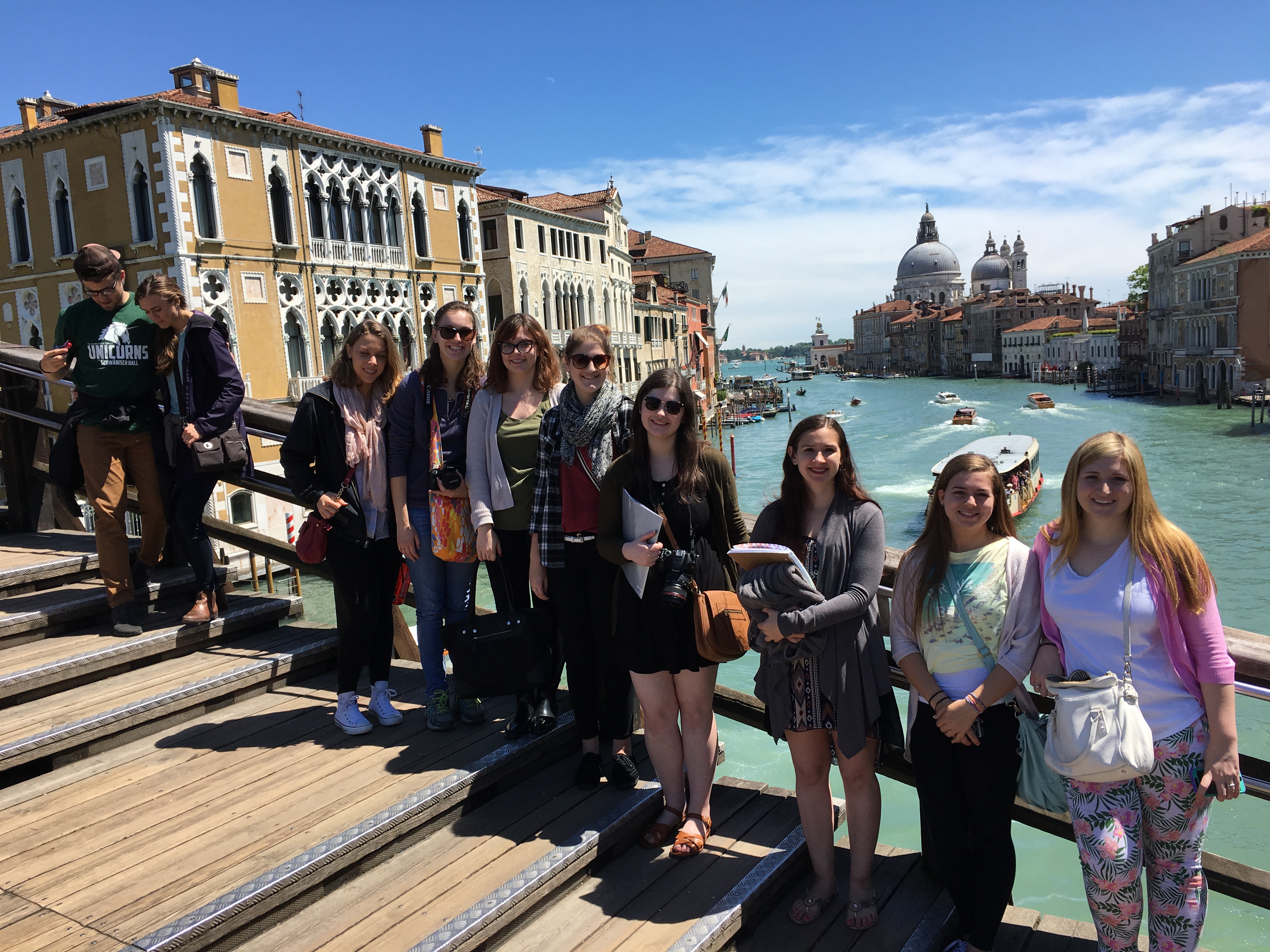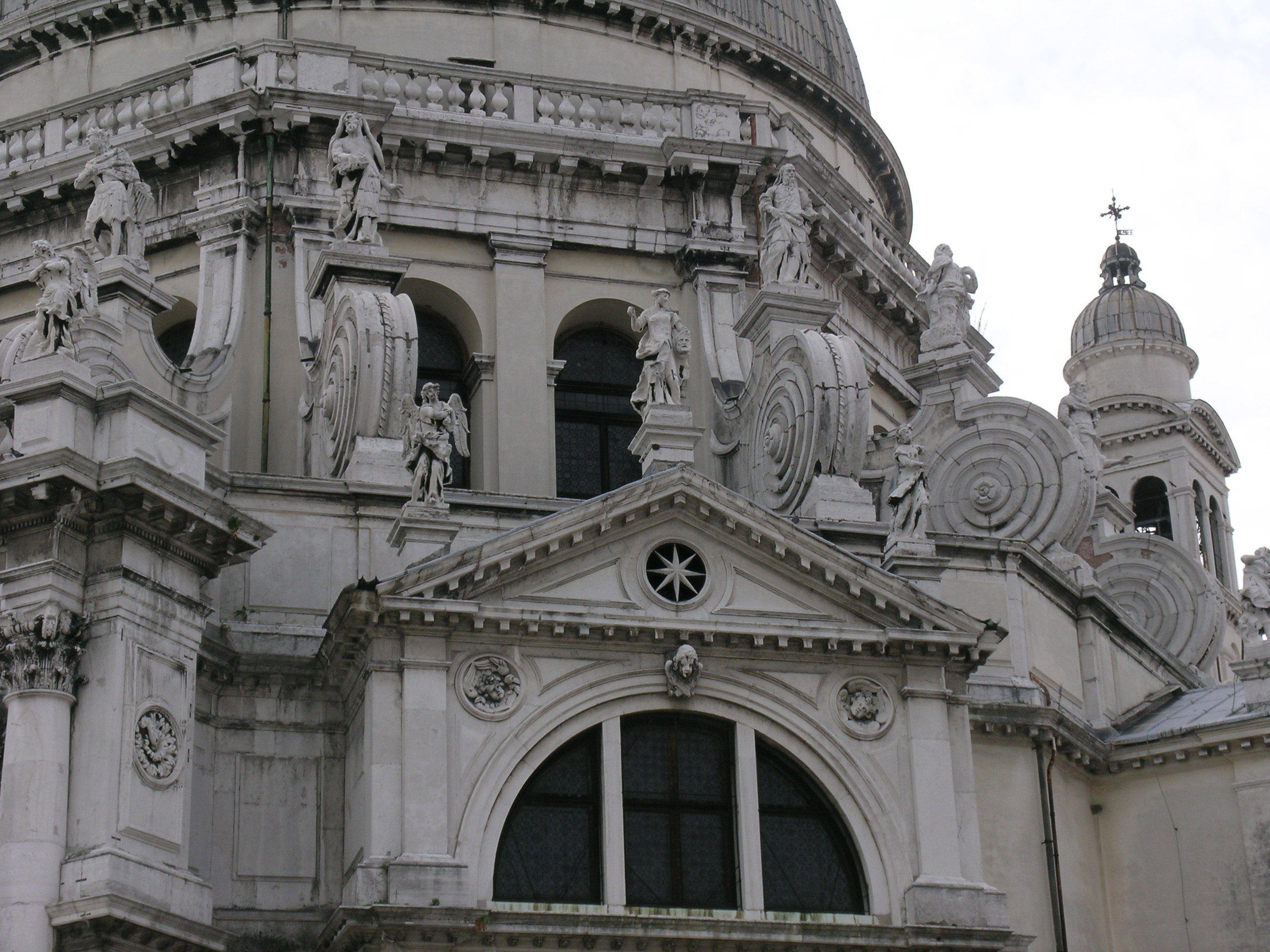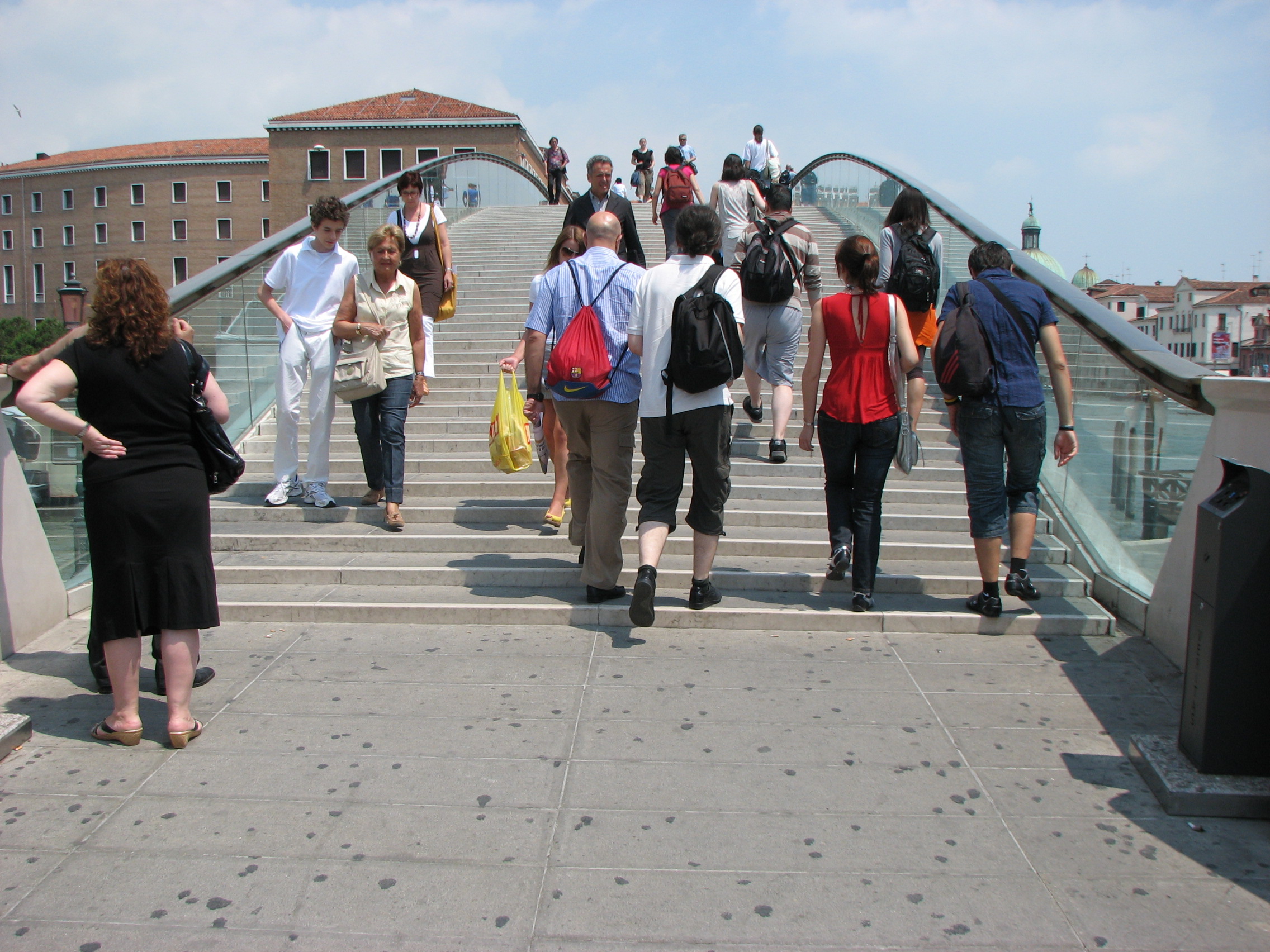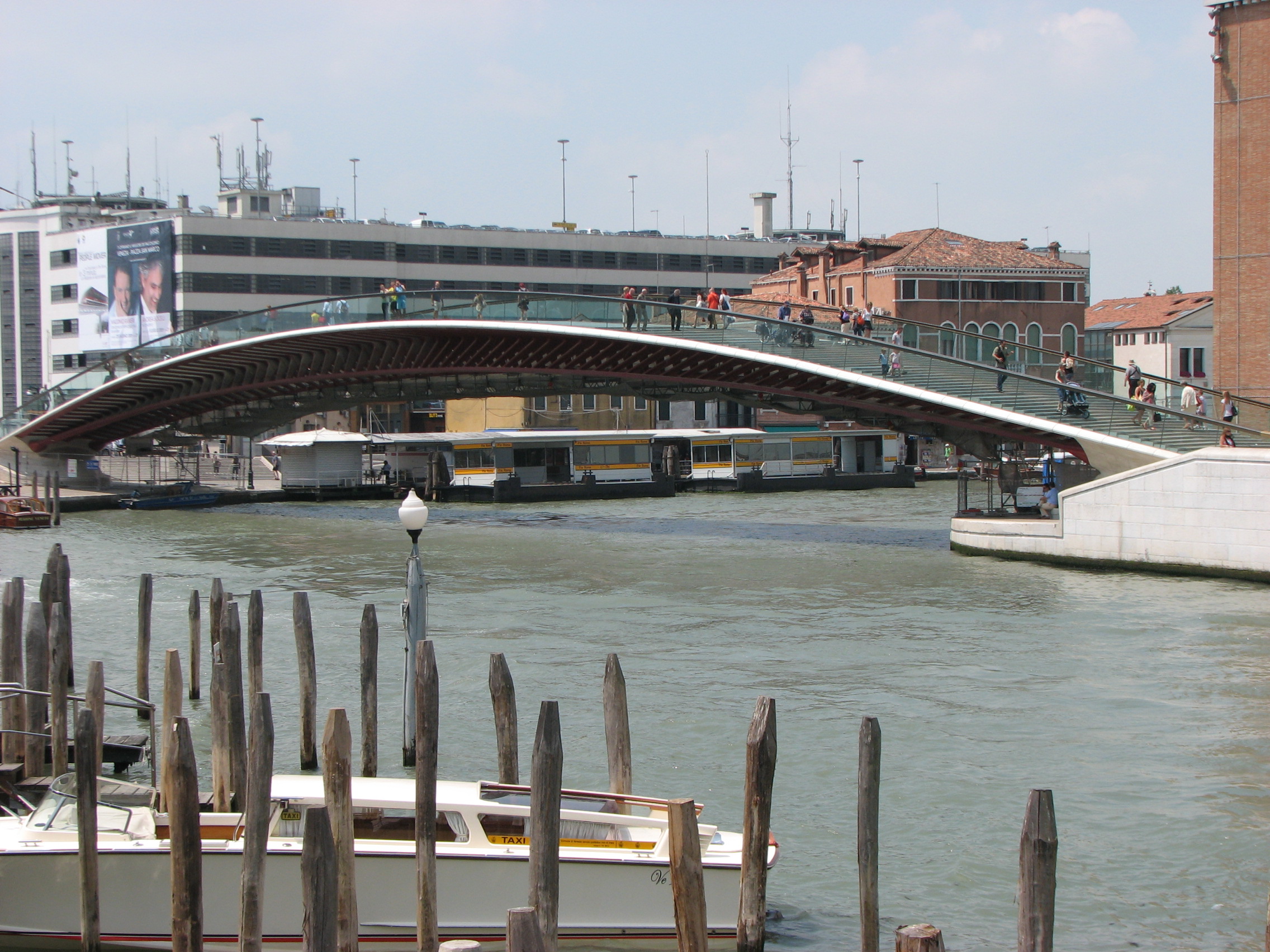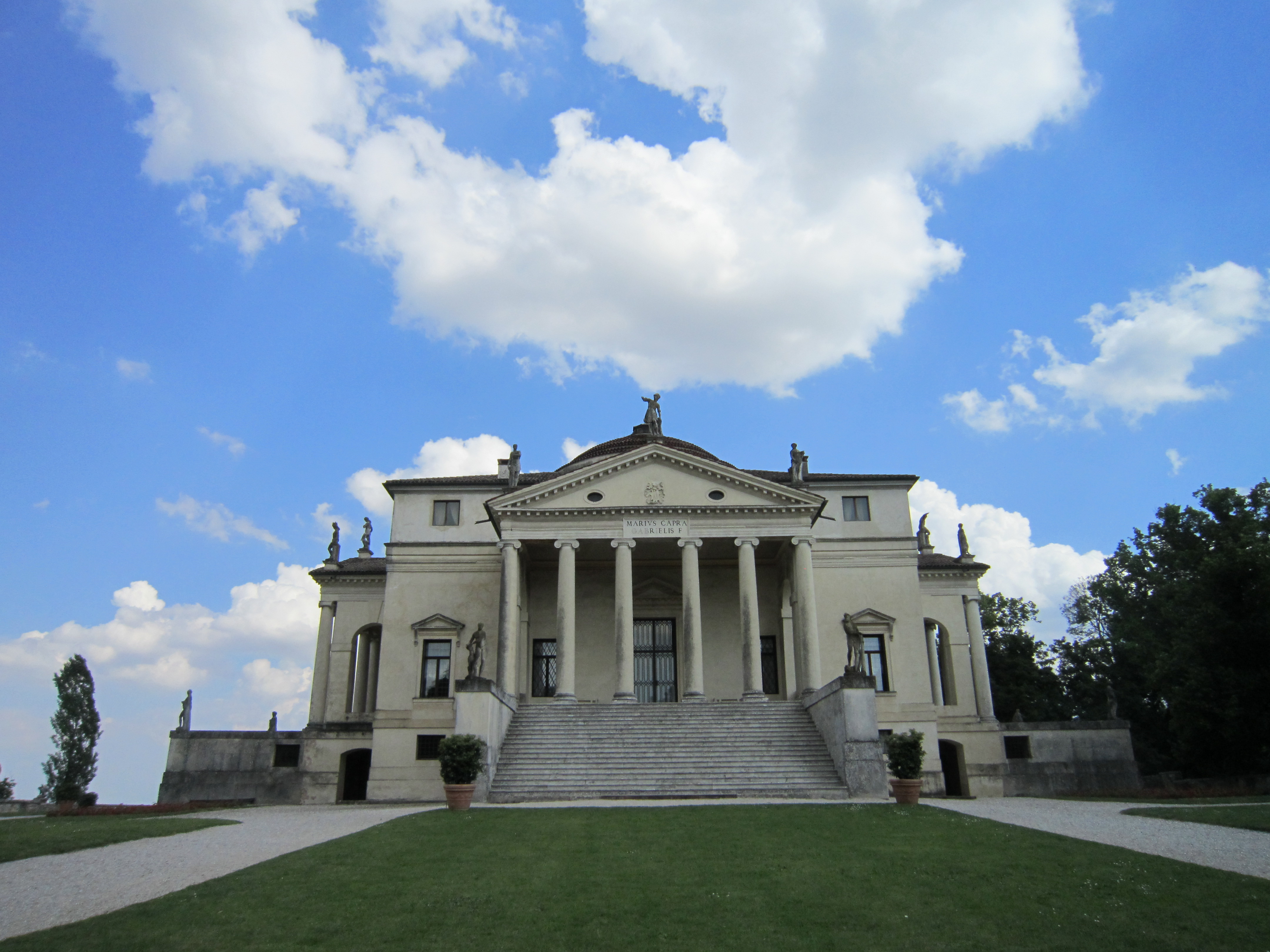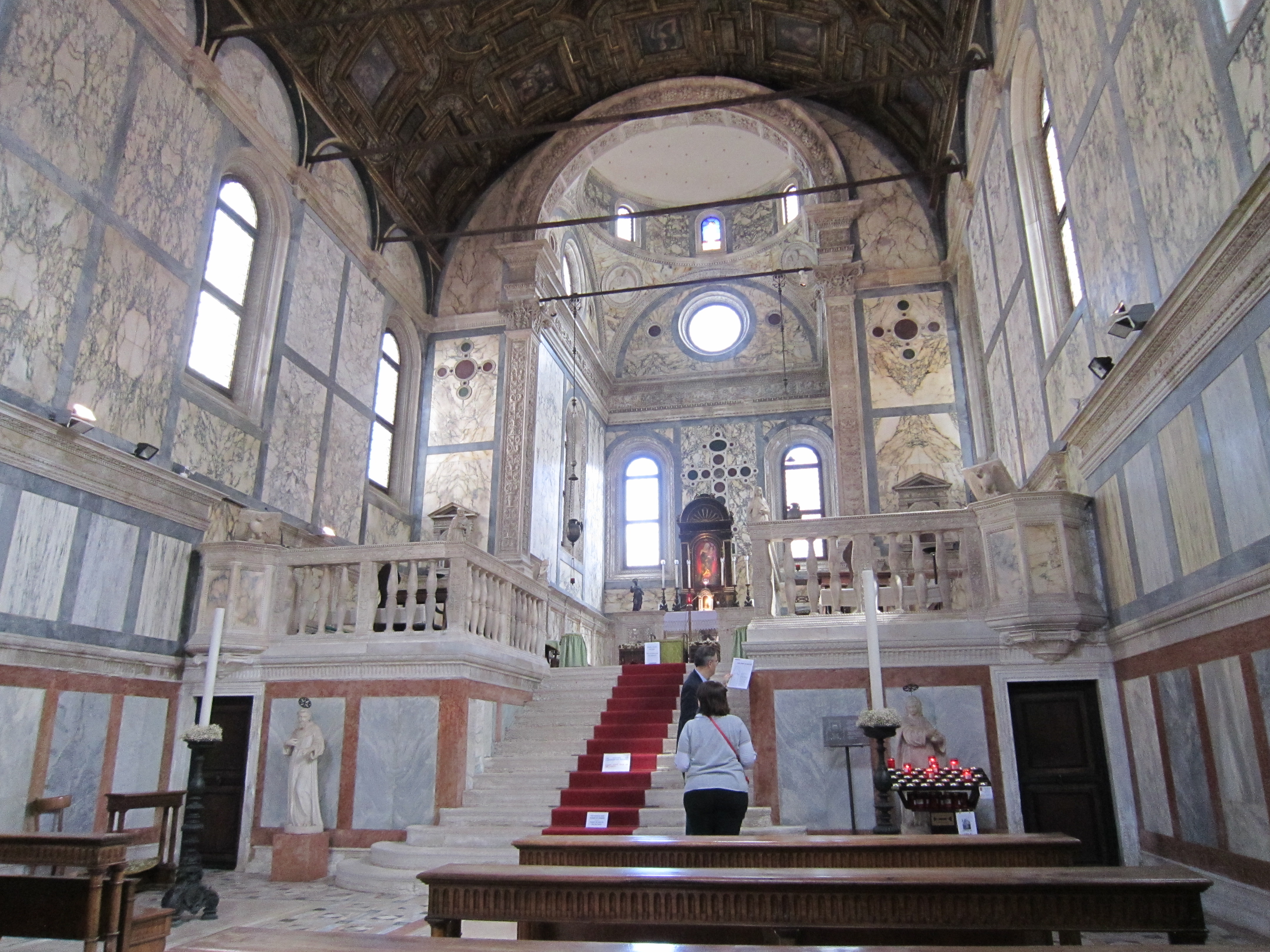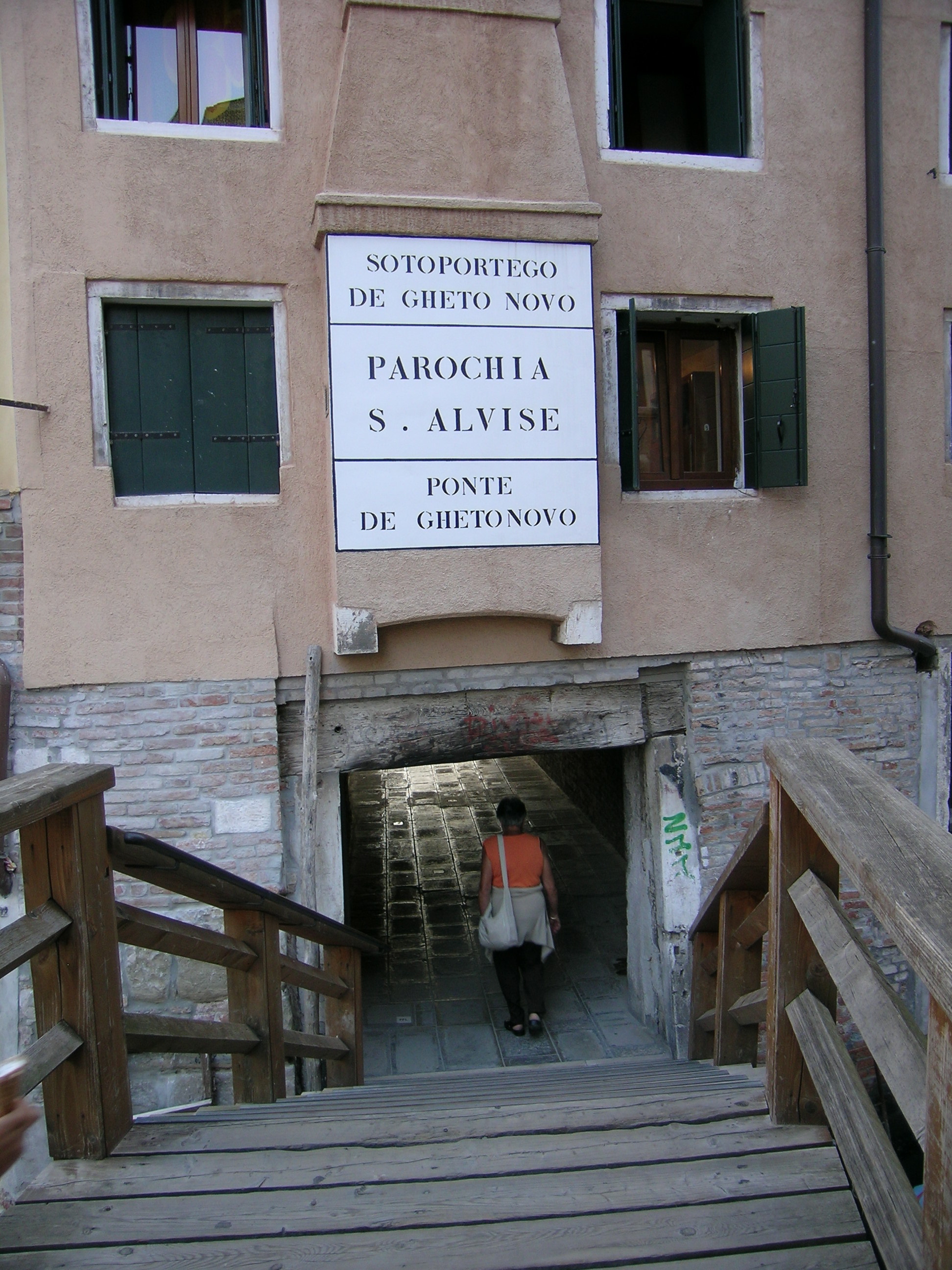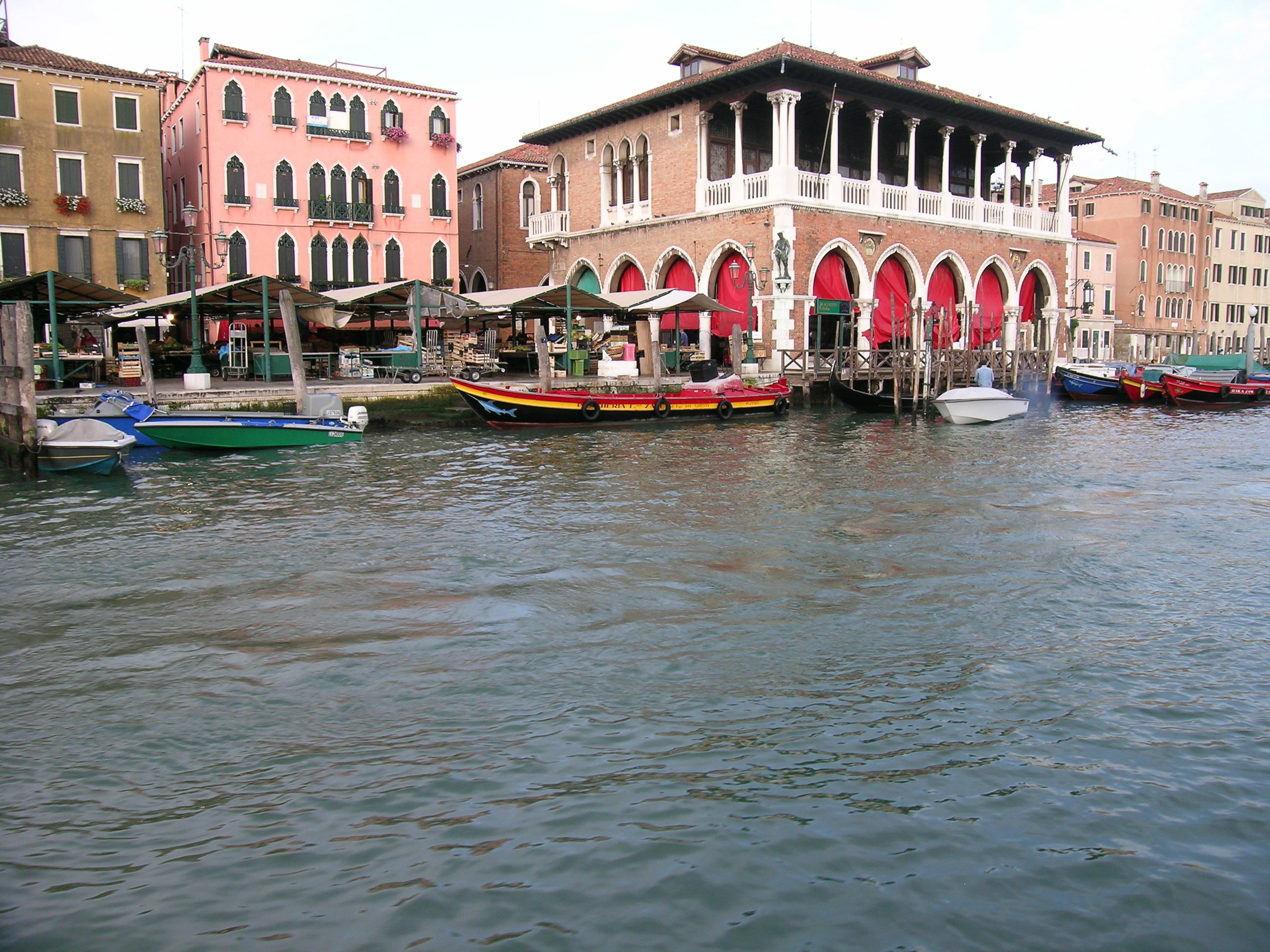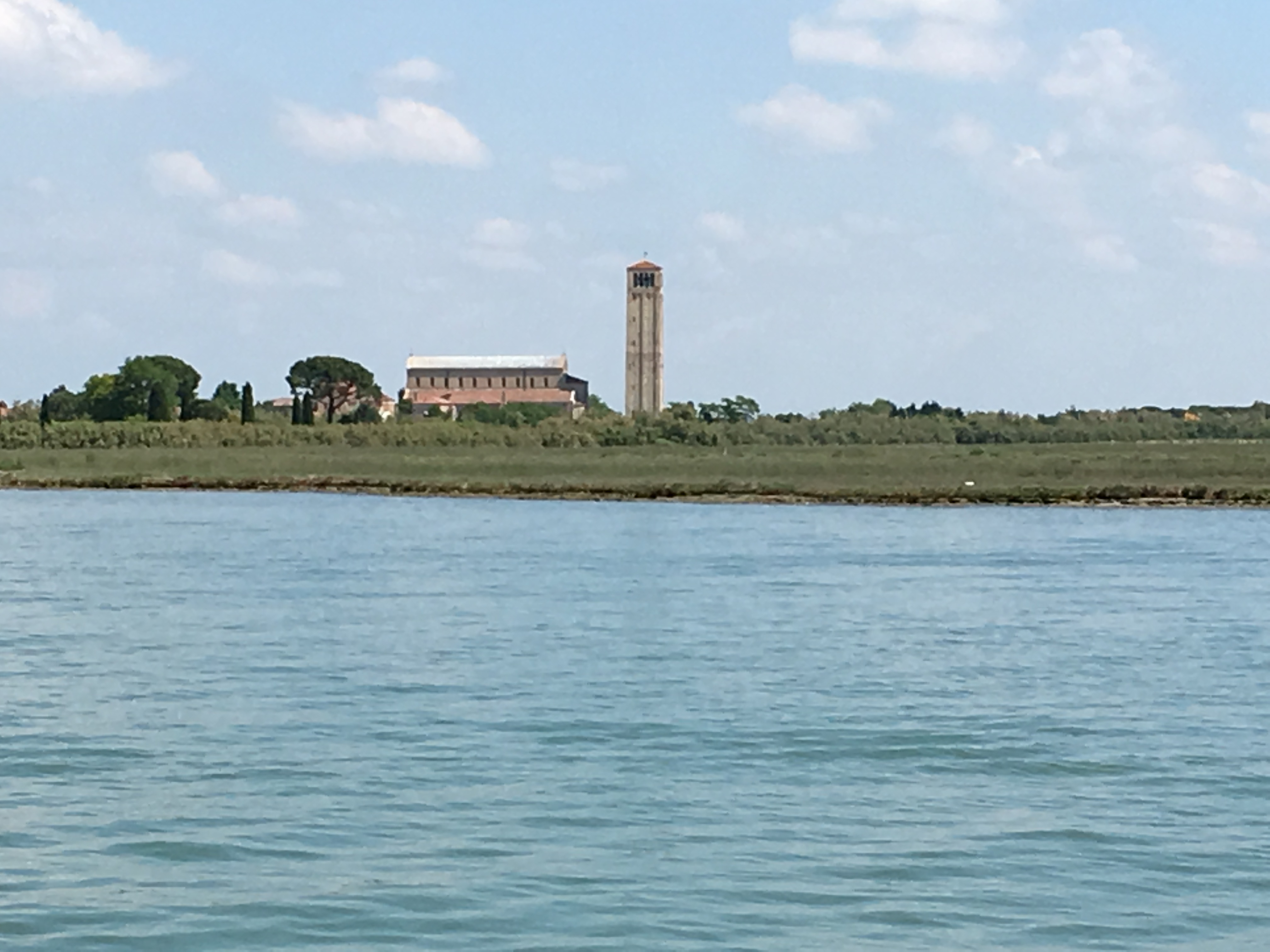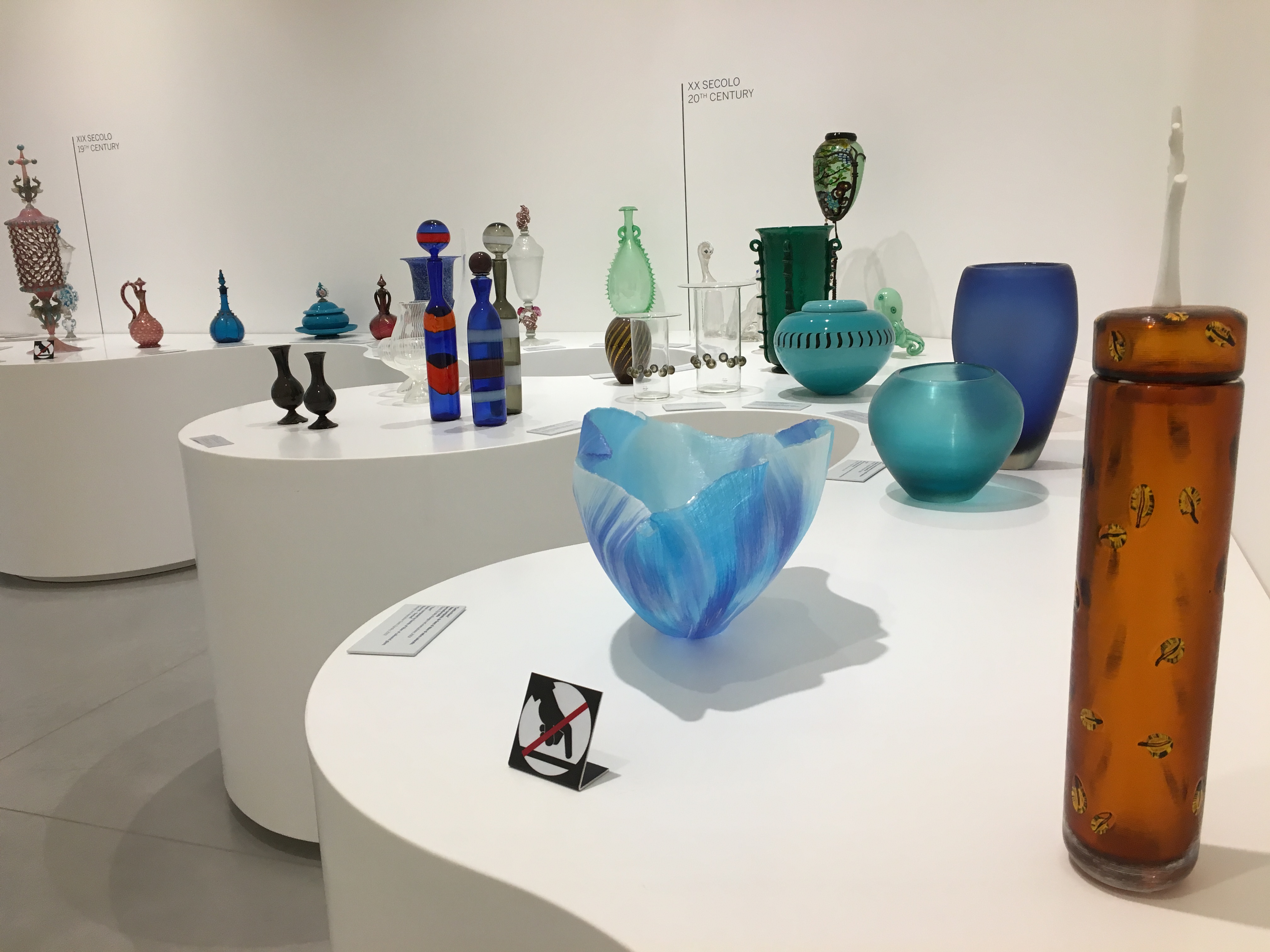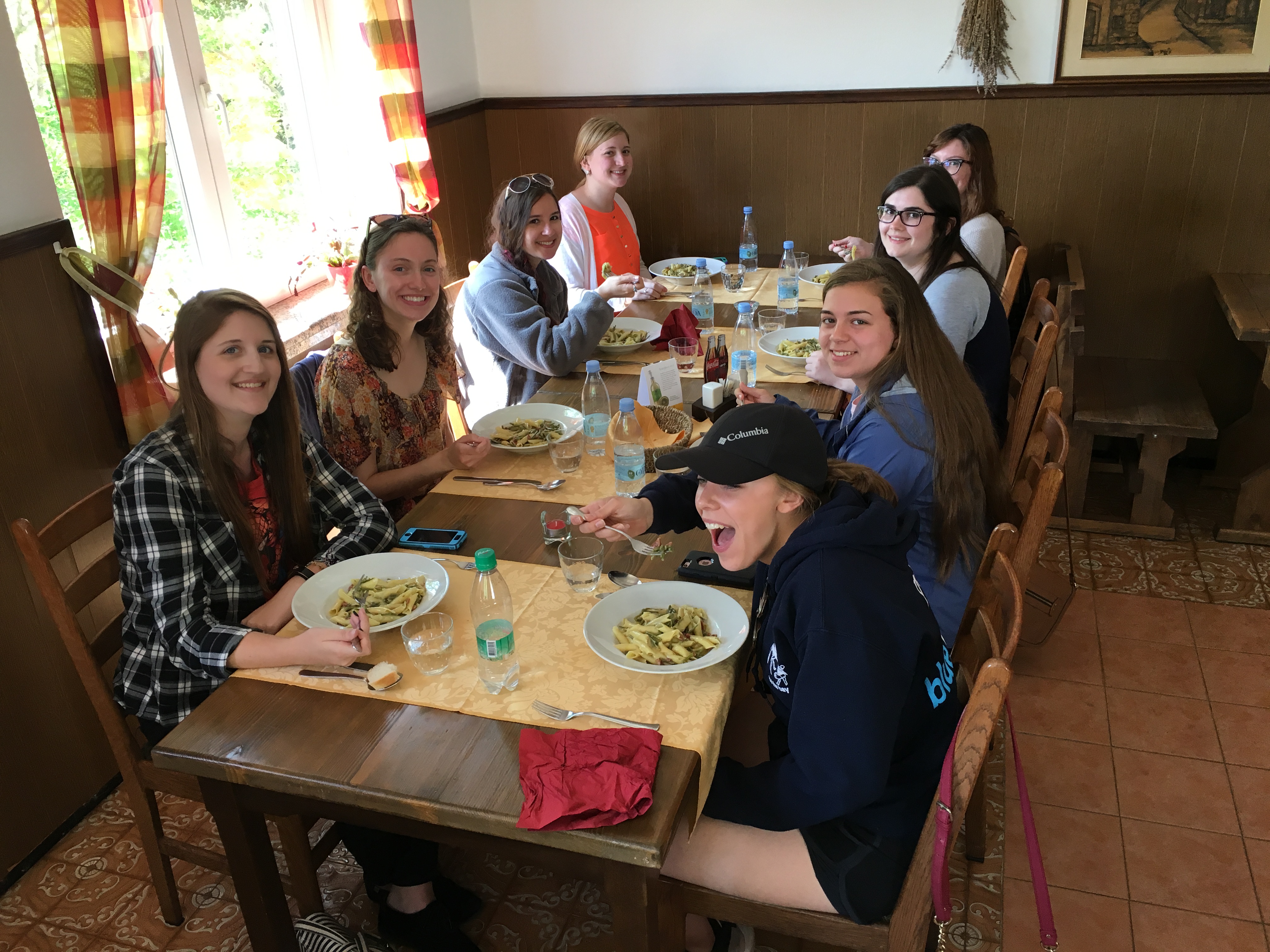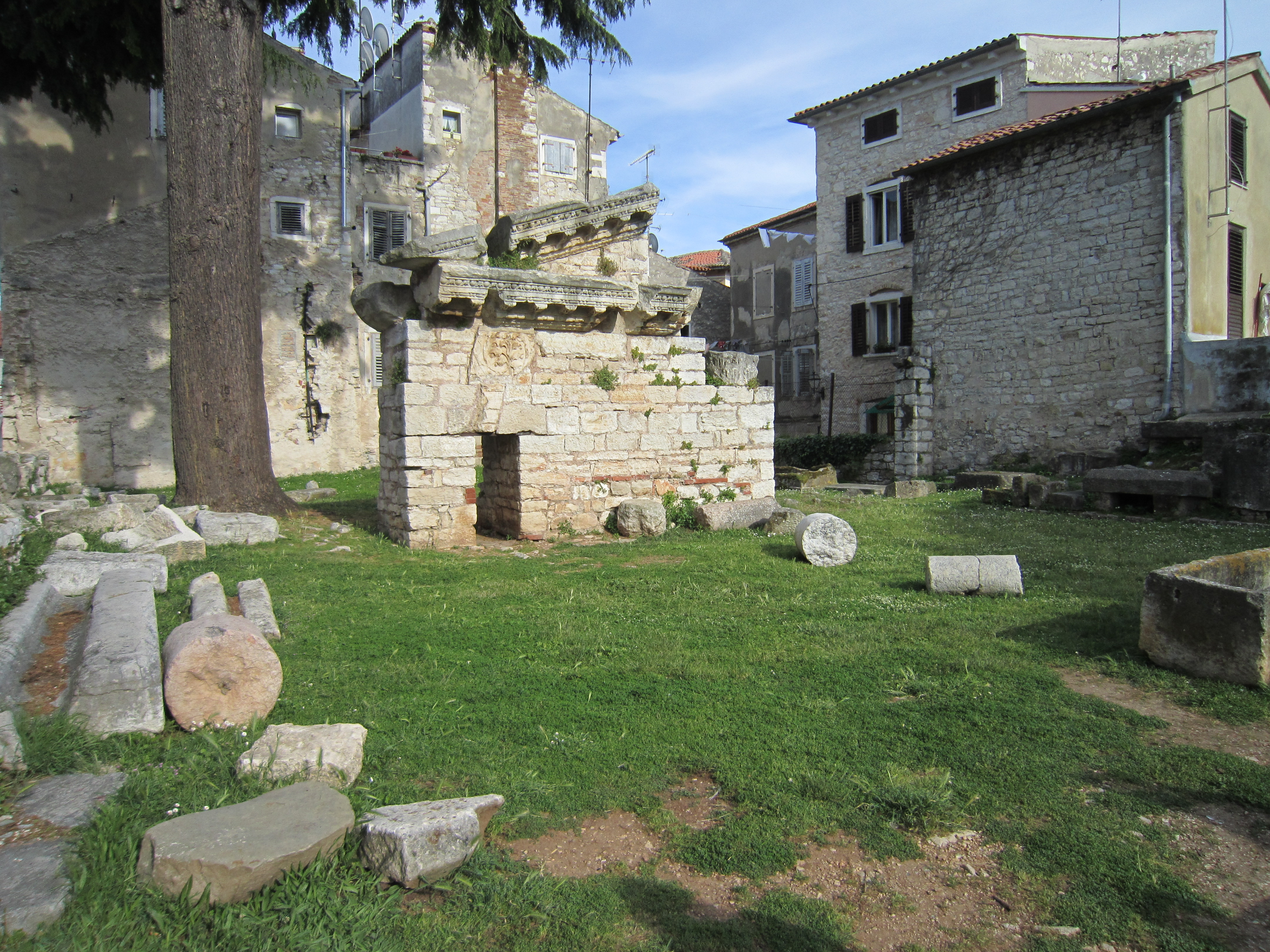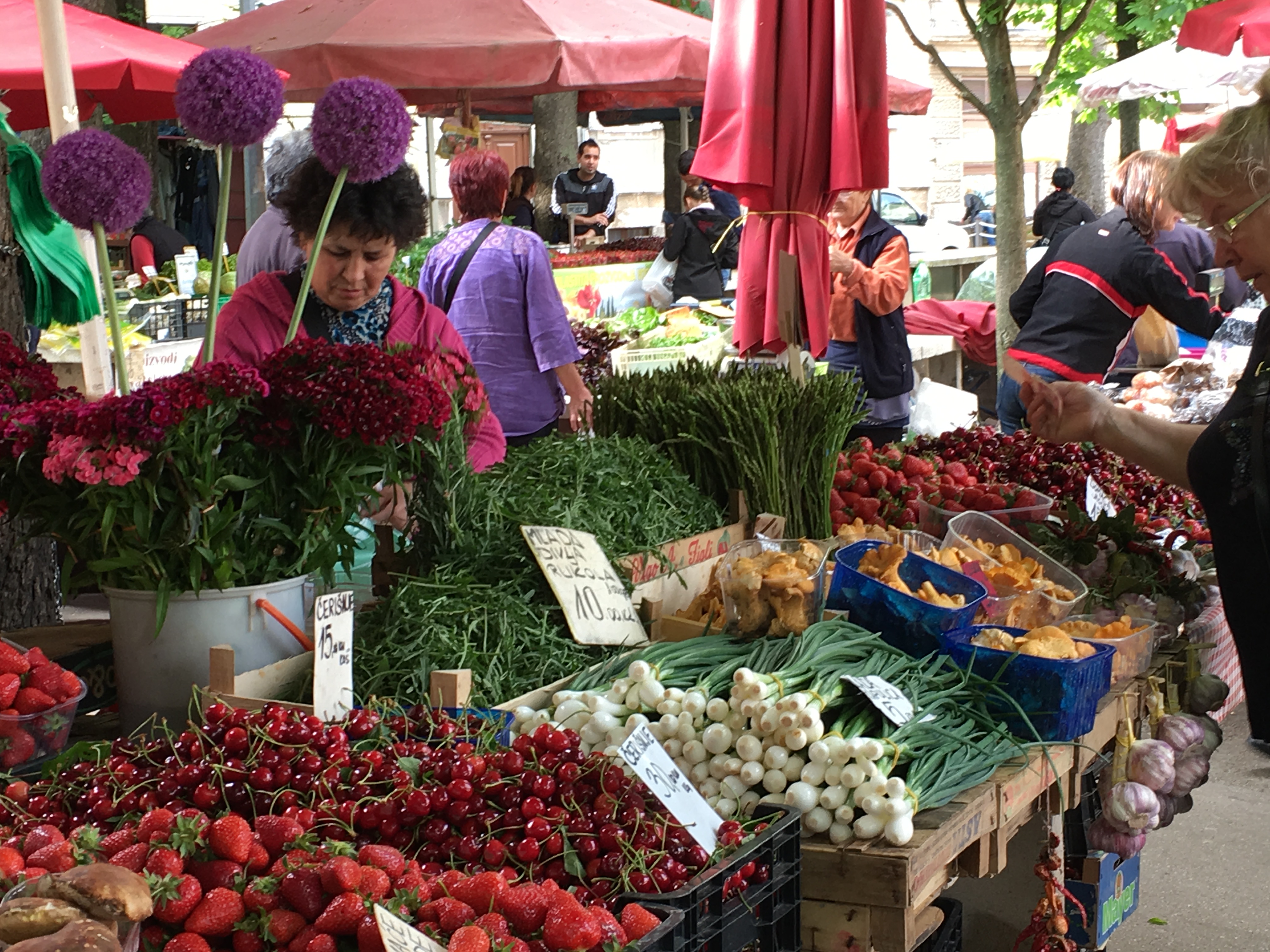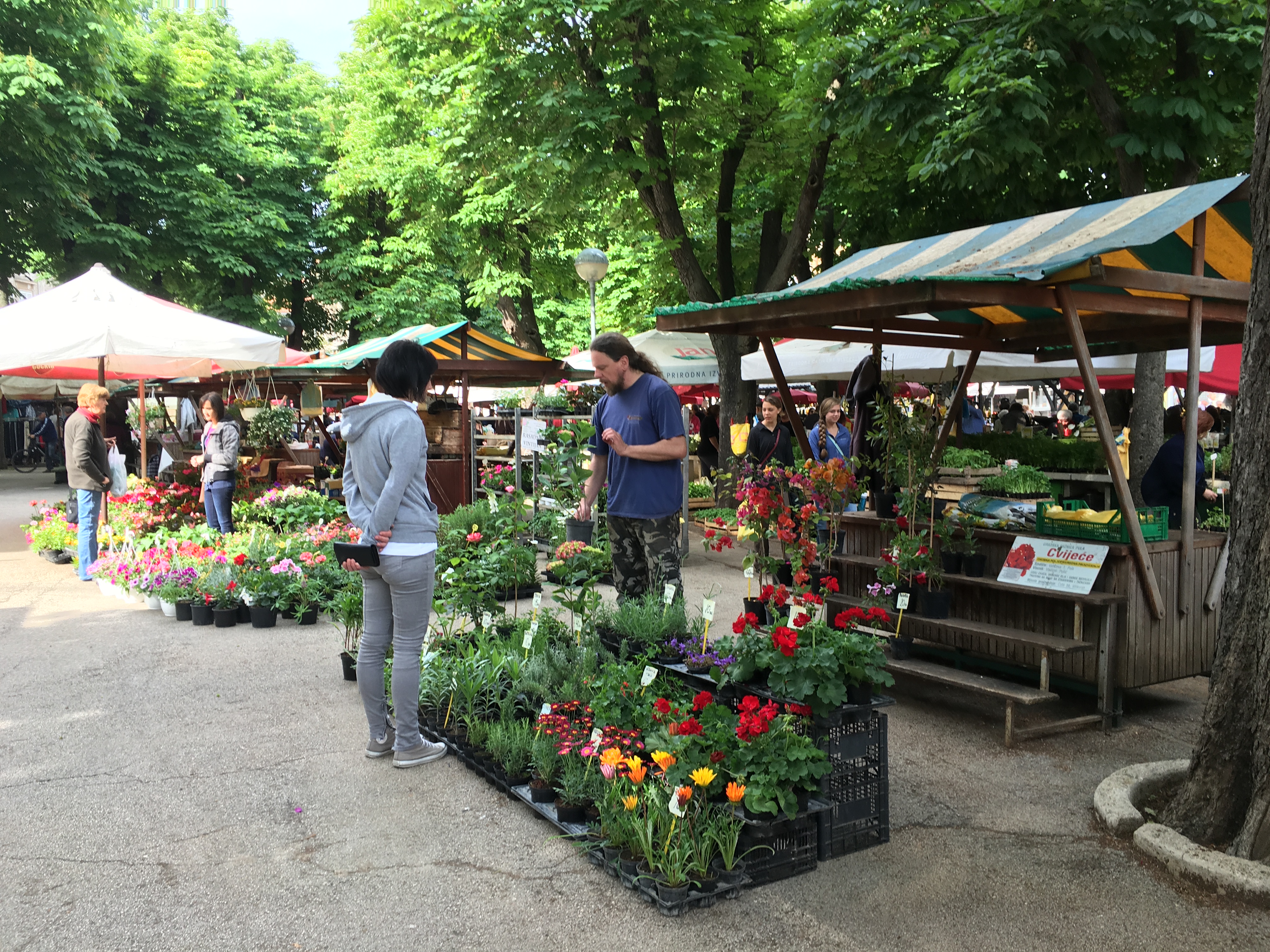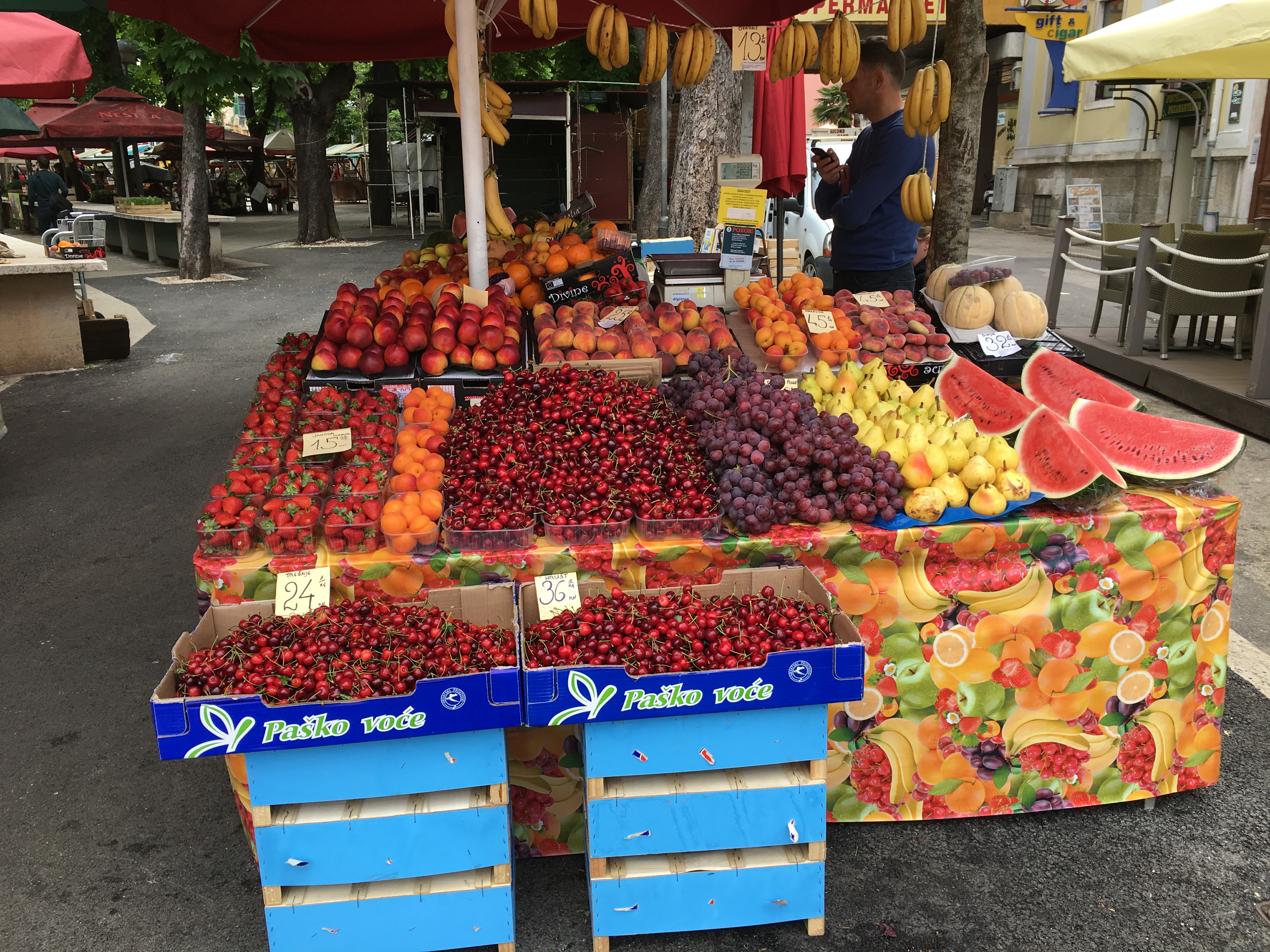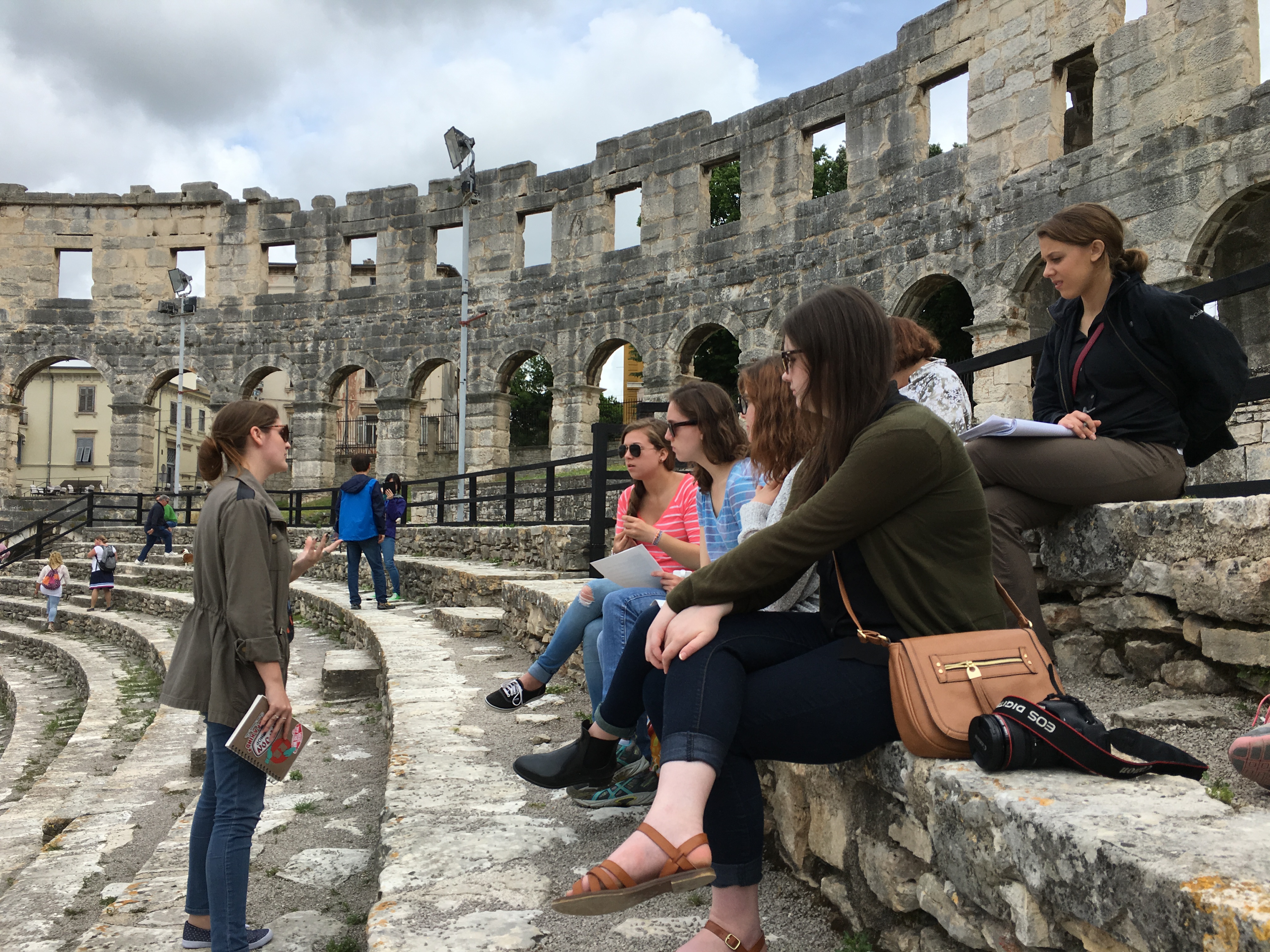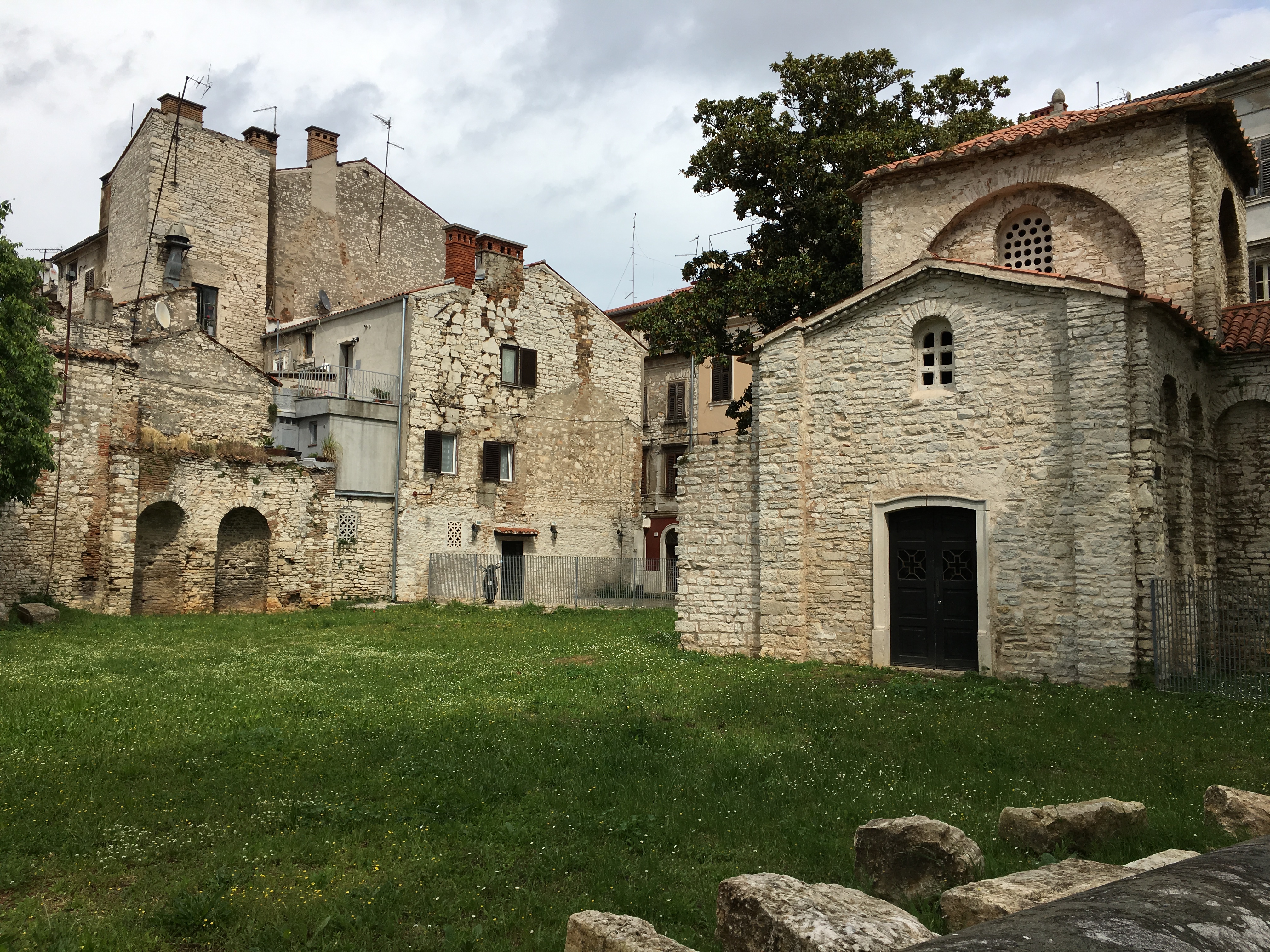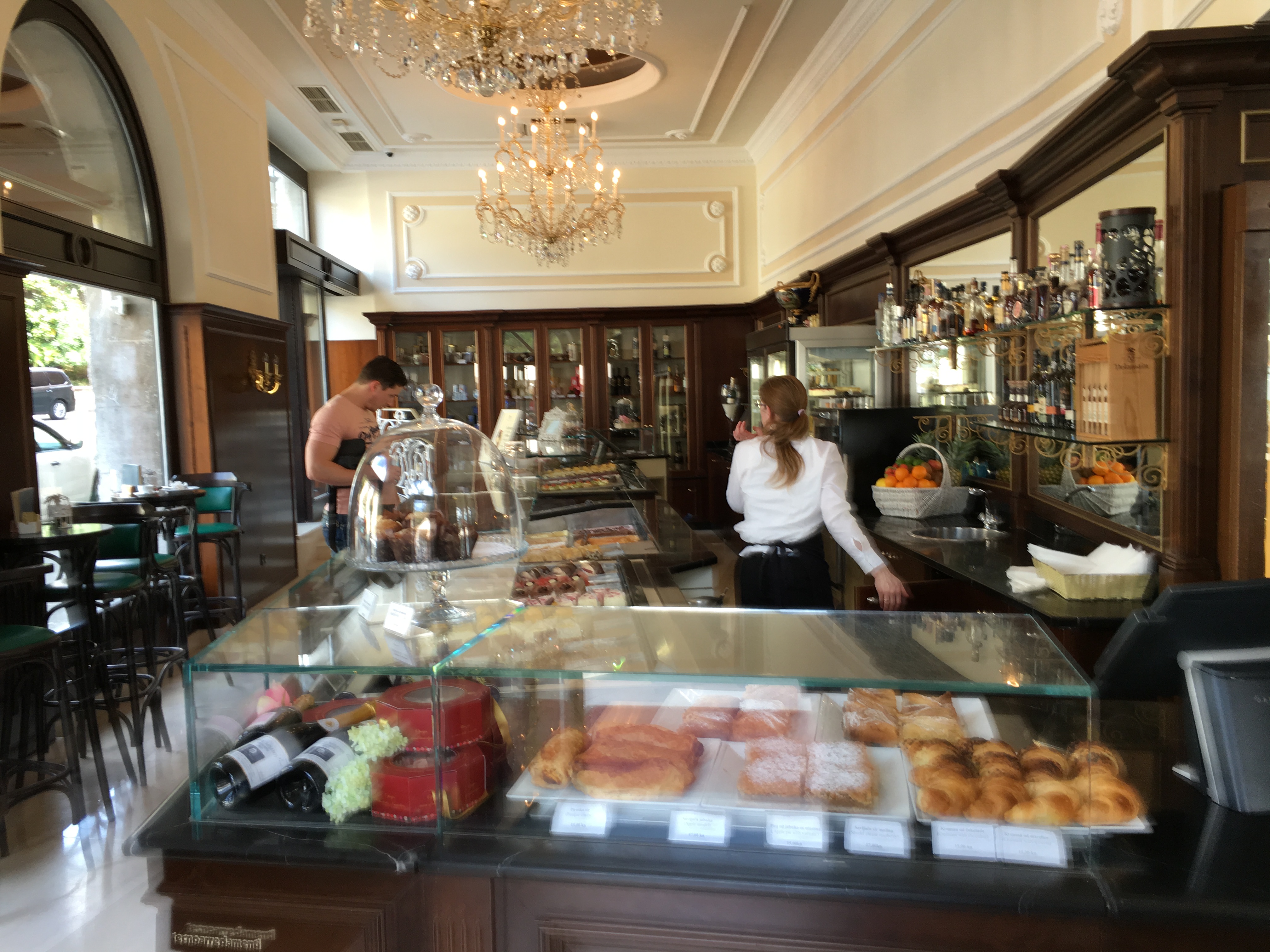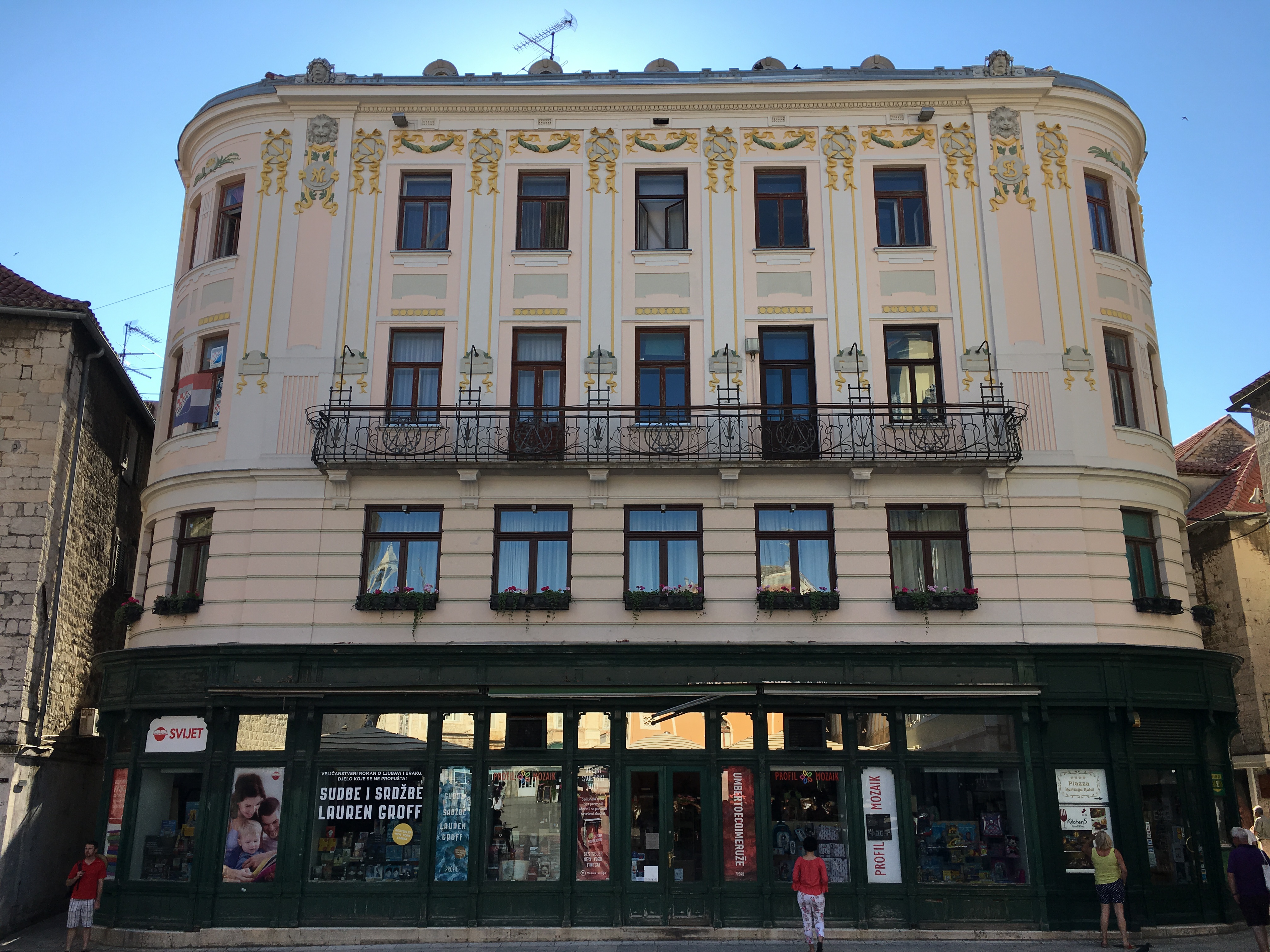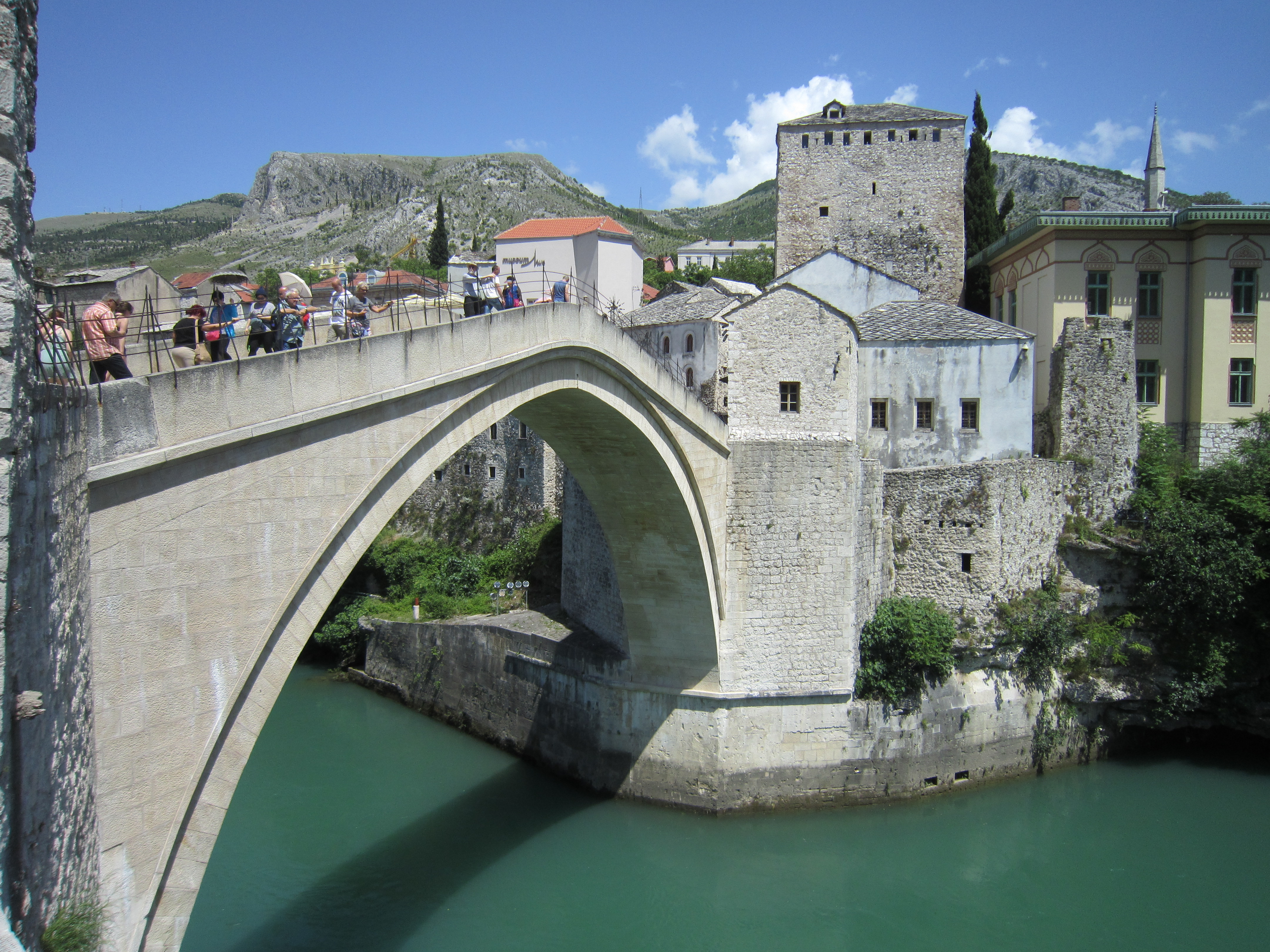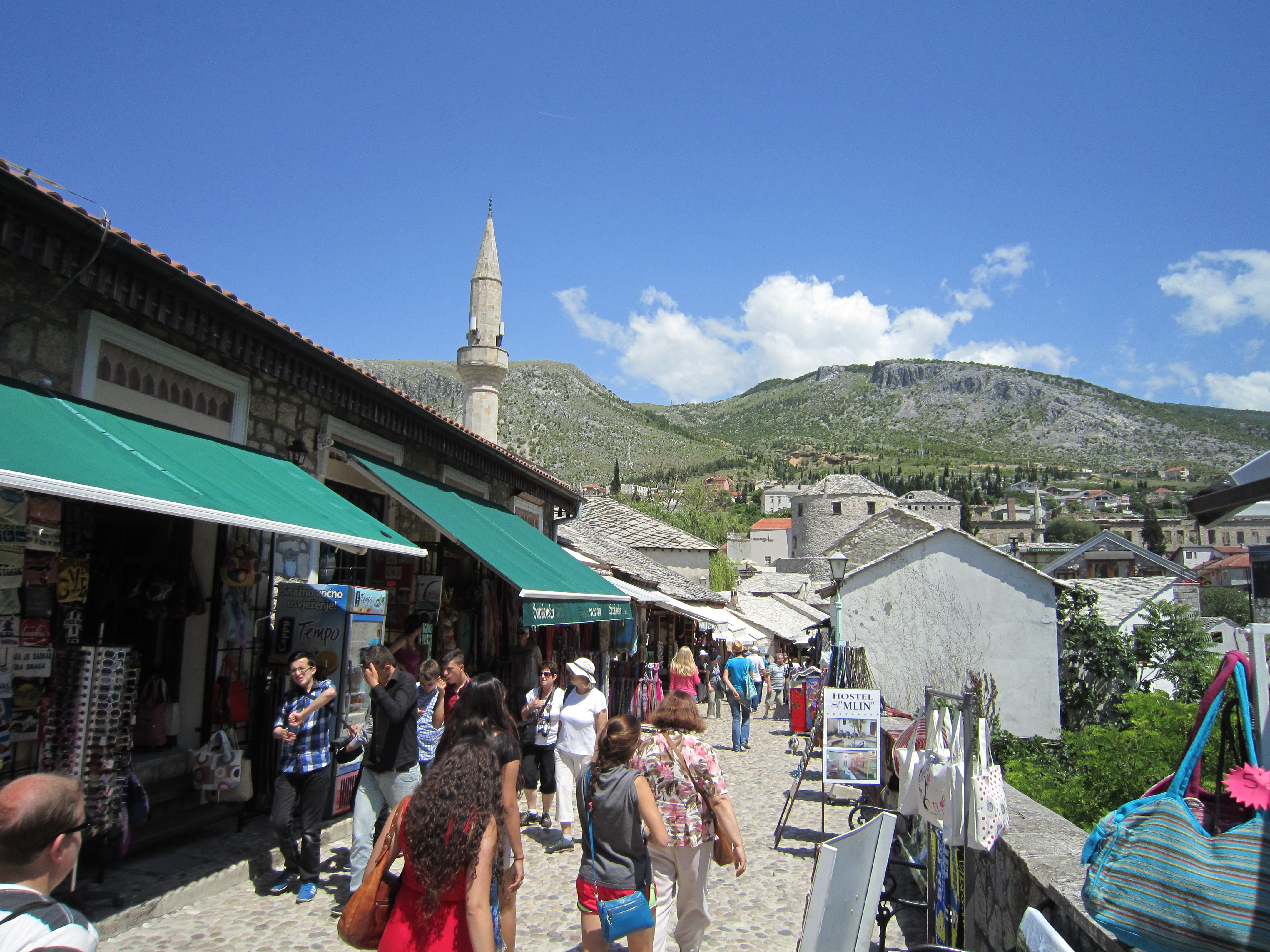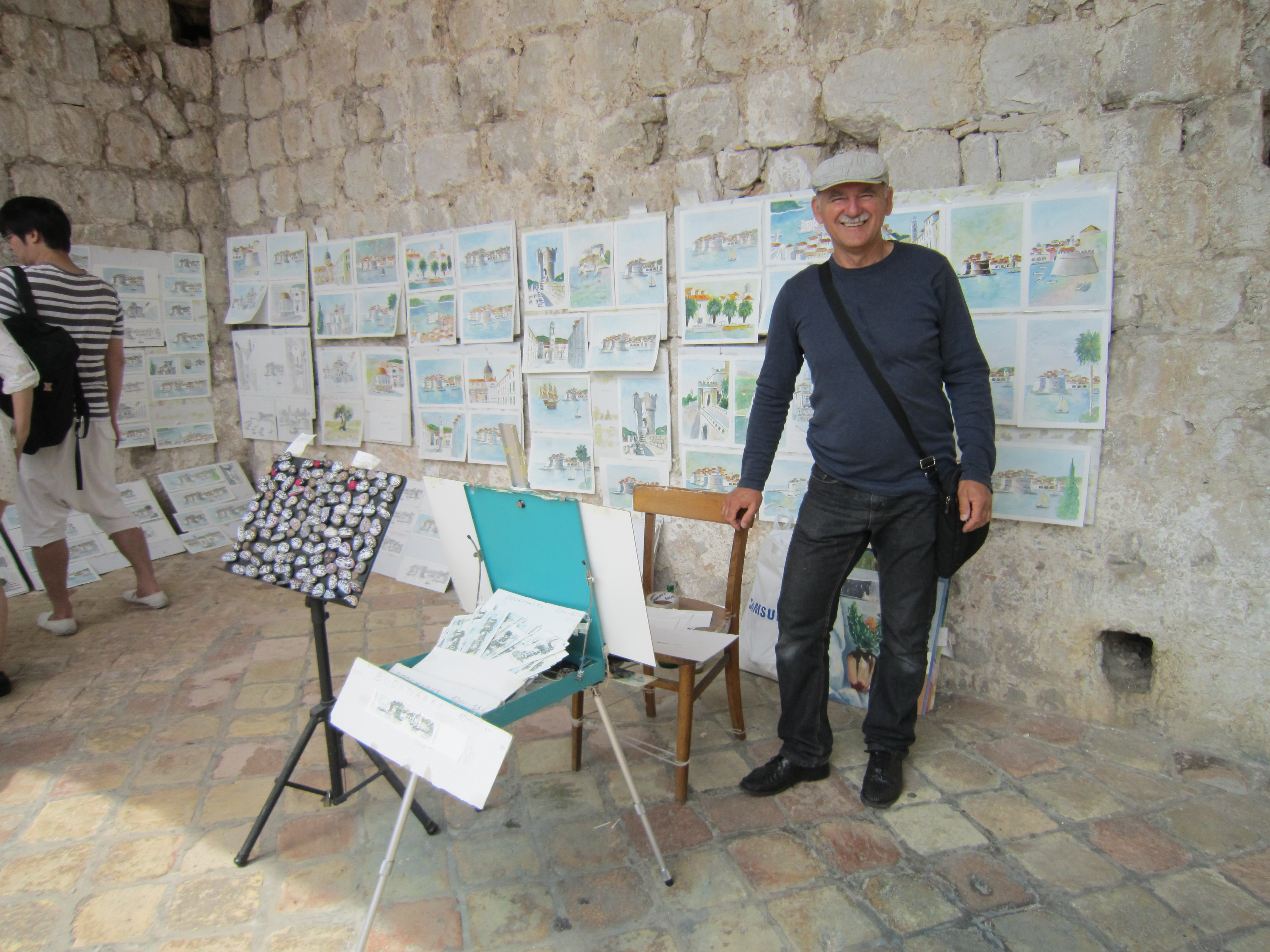May 12:
After landing at the airport in Venice we take our private water taxis to our hotel. Happy and enjoying the views!
On our way to lunch and our first site visits, we stop at the Accademia Bridge for a group photo:
Lunch at Ristorante San Trovaso — select what you like from an amazing selection of Venetian dishes.
We walk to the church of Sta. Maria della Salute, commissioned in 1630 by decree of the Venetian Senate in response to a horrific plague decimating the city, and learn about this magnificent structure designed by Baldassare Longhena in our first report:
From the church we pick up the vaporetto — Venice’s bus-boats:
We travel on the vaporetto the length of the Grand Canal to get our bearings and see some of the great “houses” along the city’s main thoroughfare:
No matter how many times you visit Venice…it is always exciting.
Our second report is at the Ponte della Costituzione (below), designed by Santiago Calatrava and built in 2007 between the train station and the bus terminal. This is the newest bridge in the city…and it is beautiful!
May 13:
We arrive at the Giardinetto Reali to begin our visits to the Piazza San Marco and all its wonderful museums…but first a group photo:
Rain or shine…we will see the sights and sites, as here at the side of San Marco where we learn about some of the sculptures and architectural elements the Venetians brought to Venice from Constantinople after the Fourth Crusade in 1204:
We visit the Basilica of San Marco, the Palazzo Ducale, and the Museo Correr. One focus of today’s visits is on the political foundations of the city and the legend of St. Mark, patron saint of Venice.
Time off in the late afternoon to enjoy Venice on our own with new friends.
May 14:
We catch an early train to Vicenza to visit Palladio’s buildings, including the Villa Rotonda, designed around 1565 with clear references to ancient Roman architecture:
We enjoy lunch in a small cafe on the grounds of the Villa Valmarana ai Nanni, a 17th-c. villa with frescoes by Venetian painters Giambattista Tiepolo and his son, Giandomenico, that date to 1757:
We also visit Palladio’s Teatro Olimpico in Vicenza, a study in perspective, ancient Roman architecture, set design, and Humanism, built between 1580 and 1585:
After Vicenza we travel to Padua to see the work of Giotto in the Arena Chapel (1305):
We leave Padua in a thunderstorm that follows us to Venice…where we dine on pizza al fresco at Gianni’s on the Zattere…the light show was fantastic. Alas…no photos!
May 15: We travel all over Venice today!
We visit the Accademia to see Renaissance and Baroque paintings; the Ca’ Rezonnico, the Museum of 18th-c. Venice; the Frari; the Palazzo Mocenigo; and the Scuola Grande di San Giovanni Evangelista.
But our last stop is a gondola ride…and everyone enjoys it!
May 16:
Today we visit the Rialto Bridge and learn about the history of Venice as a center for the import and export of goods in the Middle Ages and Renaissance, with much of that activity centered on the Rialto area:
We also visit the tiny church Sta. Maria dei Miracoli; the church of SS. Zanipolo; the Scuola Grande di San Marco; and the Jewish Ghetto.
Interior of the church of Sta. Maria dei Miracoli, built between 1481 and 1489 by Pietro Lombardo:
Verrocchio’s equestrian monument of Bartolomeo Colleoni of 1480-88 is in the campo (a Venetian piazza) outside the church of SS. Giovanni e Paolo, called “San Zanipolo” in the Venetian dialect.
One of the entrances to the Jewish Ghetto (below) in Venice; the ghetto was officially established in 1517:
Jews in Venice were required to live within the boundaries of this small island (Venice is composed of hundreds of islands) until the late 18th c. when Napoleon’s forces occupied the city. The above photo shows a 20th-c. wooden bridge connecting the Ghetto to another island; you also see here a small walkway under a building (a sottoportego) that was locked at night to insure the city’s curfew.
May 17: Our last day in Venice.
We begin our day at the fish market on the Grand Canal…taking in the sights, sounds, and smells of fresh veggies and fruits, flowers, and of course…fish.
Venice is known for its seafood, and Venetians have been buying food at this market for centuries.
Then we take a traghetto (a kind of gondola) across the Grand Canal:
and head for the Fondamenta Nove, where we embark on our journey to Torcello and Murano.
This is one of the last surviving bridges in the lagoon that shows what all Venetian bridges were originally like — no handrail!
This bridge (above), called the Devil’s Bridge, is on the island of Torcello (below).
Torcello, an island in the northern lagoon, was first settled in 452 and is probably the mother-island to Venice. By the 14th c. the waters of the lagoon around Torcello had silted up so badly that malaria ravaged the population and most survivors fled to Venice. Today Torcello has very few residents, but is an important site for our study of the lagoon’s early foundations. Two small museums hold late Roman artifacts and early medieval mosaics and sculptures, including works from the two churches (7th c. and 11th/12th c.) on the island.
We travel on to Murano for lunch.

After lunch we have free time in Murano to visit the Glass Museum and the other sights. Murano was first settled in the 6th c. At the end of the 13th c. all the glass makers in Venice were required to set up their shops here, an indication of the importance of the glass-making industry to the Republic of Venice, and of the Republic’s awareness of the need to secure the safety of Venice from the dangers of fire inherent in the process of making glass. Glass art is everywhere on Murano…and it is beautiful!
The chandelier above is in the 12th-c. church of Santa Maria e San Donato (below).
A detail of one of the historic chandeliers in the Glass Museum (below):
May 18: Today we leave Venice and travel to Poreč, Croatia via Slovenia where we stop for lunch.
We enjoy a hearty bowl of home-made pasta with fresh wild asparagus.
In Poreč we visit the 6th-c. ecclesiastical complex of the Basilica of Euphrasius…
and the reconstructed remains of an ancient temple. We arrive in Pula in the evening.
May 19: A full day in Pula, Croatia:
the ancient Roman amphitheater:
the Twin Gates:
and the Arch of the Sergii:
We also visit an ancient Roman mosaic that is today about 20′ below the current street level:
and the restored Temple of Augustus and Roma:
and the archaeological site of the Byzantine church of Sta. Maria Formosa:
before settling down for the evening in Pula on our own.
May 20: In transit from Pula to Zadar we stop in Opatia, a late 19th-c. Austro-Hungarian beach town visited by Chekhov, Mahler, Puccini, and Isadora Duncan:
where we wander past cafes:
and relax for a meal by the waterside:
We arrive in Zadar in time for a short rest in our very mod hostel. Couldn’t resist a selfie here!
Then we’re off to see the sunset!
May 21:
We spend the morning visiting ancient Roman and Byzantine sites in Zadar, here the 9th-c. church of St. Donatus built from the ruins of the ancient Roman forum:
Our hostel is visible in the background at right (above). Every site, including St. Donatus, has a guardian….
And what treasures to guard! You can see below how columns from the forum’s buildings were used for the foundation of pillars inside the church:
We stop in Trogir on our way to Split. Among the sites we visit is the 12th-c. Cathedral of St. Lawrence where the bell tower is reminiscent of an M.C. Escher print! Some brave souls made it to the top!
A late 15th-c. chapel in the cathedral:
A typical street in Trogir:
And an inviting garden beyond a Renaissance portal:
May 22: We spend the day in Split exploring the town and Diocletian’s Palace:
Here is the peristyle where Diocletian once stood framed by the arched opening, a motif Palladio would take up in his architecture. Remember Palladio…in Vicenza? The connections!
The 28′ tall bronze statue of Gregory of Nin by Ivan Mestrovic is currently outside the Golden Gate of Diocletian’s palace, but in 1929 it was place in the peristyle (above). Gregory of Nin was a bishop in Croatia in the early 10th c. who fought to have the Croatian language recognized, in particular by the Western Church which, at the time, insisted that all services be conducted in Latin, a language that was not known to most Europeans.
In addition to ancient Roman archaeological sites and monuments of Croatian history, Split has beautiful 19th-c. buildings, and strolling through the old city is a pleasure:
May 23: We take a short walk to the Archaeological Museum, then a bus to Salona, the ancient Roman town where Diocletian was born.
The archaeological site is quite large and there is much to see that is ancient Roman as well as early Christian. Of course…there is an amphitheater:
May 24: We leave Split and visit Narona, site of an ancient Roman temple dedicated to Augustus and his family inside the ultra-modern museum:
The temple dedicated to Augustus and his family is reconstructed on the ground level of the museum; a second floor exhibits Roman artifacts found in the area:
We travel through Bosnia-Herzegovina to visit Mostar and Stari Most, or “Old Bridge.” This remarkable Ottoman bridge was built in the 16 c. from a design by Mimar Hayruddin; it was destroyed in 1993 during the breakup of the former Yugoslavia, and rebuilt in 2004:
The road to the bridge is lined with shops of all sorts, and is like a souq, the great market streets in western Asian and north African cities:
We leave Mostar after lunch and arrive in Dubrovnik in the evening.
May 25…We spend our day in Dubrovnik walking through the historic town, we explore the city’s medieval town walls:
Amazing views of the mountain above the city and the city below us:
We stop for a group photo:
…and admire the work of a local artist:
After class ends today, there is free time. What did we do? Some went kayaking in the Adriatic!
Others took in the sights and sounds of this beautiful city on the Adriatic.



